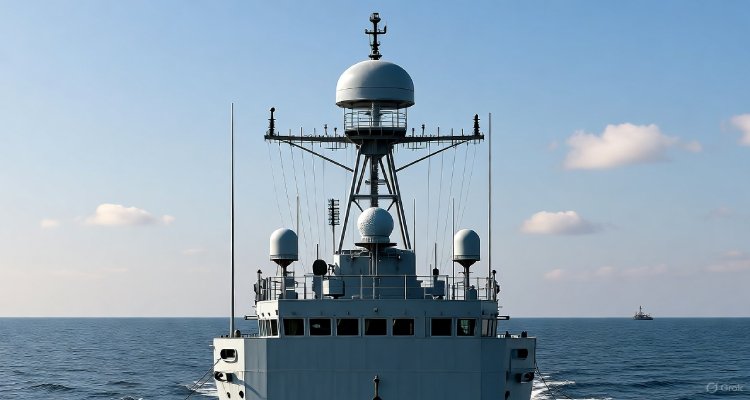INS Sahyadri Strengthens Indo-Pacific Ties in Japan-India Maritime Exercise JAIMEX-25
INS Sahyadri joins Japan’s JMSDF for the JAIMEX-25 naval drills in the Indo-Pacific, boosting maritime cooperation, regional stability, and defence interoperability.
Introduction: Navigating the Waters of Partnership
In the vast expanse of the Indo-Pacific, where shifting alliances and maritime ambitions shape global security, one partnership continues to stand firm — that of India and Japan. The latest symbol of this growing camaraderie is the participation of Indian Naval Ship (INS) Sahyadri in the Japan-India Maritime Exercise (JAIMEX-25), held from October 16 to 18. Conducted in two phases — at sea and in port — this exercise marks another milestone in strengthening naval cooperation and strategic alignment between the two democratic maritime powers.
Context & Background: The Strategic Depth Behind the Drills
The India-Japan ‘Special Strategic and Global Partnership’ has evolved far beyond diplomacy, becoming a vital component of the Indo-Pacific’s security architecture. At its heart lies maritime collaboration — an arena where both nations share not just interests, but values: freedom of navigation, respect for international law, and the vision of a Free, Open, and Inclusive Indo-Pacific.
The Japan Maritime Self-Defense Force (JMSDF), Japan’s maritime warfare branch, and the Indian Navy have held joint exercises for over two decades, reflecting trust built through interoperability and mutual respect. JAIMEX, launched as a dedicated bilateral exercise in 2012, has since grown in scale and complexity.
Main Developments: JAIMEX-25 at Sea and Shore
During JAIMEX-25, the sea phase unfolded as a display of cutting-edge naval capabilities and seamless coordination. INS Sahyadri — a Shivalik-class stealth frigate commissioned in 2012 — operated alongside JMSDF’s JS Asahi, JS Oumi, and submarine Jinryu. Together, they executed advanced drills including:
- Anti-Submarine Warfare (ASW) operations to detect and neutralize underwater threats.
- Missile defence and tactical manoeuvres simulating real-time combat scenarios.
- Flying operations and underway replenishment, ensuring operational endurance and joint logistics.
Following the sea phase, Sahyadri made a port call at Yokosuka, Japan’s key naval base. The harbour phase featured professional exchanges, crew interactions, and discussions on operational tactics — all aimed at deepening mutual understanding and camaraderie.
For Sahyadri, this engagement also formed part of her Long Range Deployment to the Indo-Pacific — a voyage symbolizing India’s enduring commitment to regional peace and its expanding maritime footprint.
Expert Insight: Strength in Shared Seas
Defence analysts have hailed JAIMEX-25 as more than a tactical exercise — it’s a strategic signal.
“India and Japan are demonstrating that their partnership is not just about defence cooperation but about shaping the rules of the Indo-Pacific,” says Rear Admiral (Retd.) Ajay Misra, a maritime strategist. “Such exercises enhance interoperability, but more importantly, they reaffirm a shared vision for an order based on freedom and stability at sea.”
This perspective resonates with Japan’s renewed emphasis on maritime security amid regional tensions and India’s growing role as a net security provider in the region. Together, their navies serve as anchors for regional balance and cooperation.
Impact & Implications: Beyond the Horizon
JAIMEX-25 reinforces a critical truth — maritime cooperation is the cornerstone of peace in the Indo-Pacific. With rising concerns over freedom of navigation, sea lane security, and submarine proliferation, India and Japan’s growing synergy offers reassurance to like-minded partners.
The exercise also supports the objectives of Quad cooperation — involving India, Japan, the United States, and Australia — which aims to ensure an open maritime order rooted in transparency and collective defence.
For India, such deployments showcase the country’s Atmanirbhar Bharat initiative in defence manufacturing, as Sahyadri herself is an indigenously built guided missile stealth frigate designed for multi-role operations. Her presence symbolizes the capability and confidence of a self-reliant navy operating on the global stage.
Conclusion: Sailing Toward a Secure Indo-Pacific
From Yokosuka’s harbour to the blue expanse of the Pacific, JAIMEX-25 represents more than just a joint exercise — it’s a reaffirmation of trust, technology, and teamwork. As both nations navigate an increasingly contested maritime landscape, the partnership between the Indian Navy and JMSDF stands as a beacon of cooperation and stability.
In a region where the future of global trade and security is anchored at sea, exercises like JAIMEX-25 ensure that the waves of diplomacy, defence, and dialogue move in harmony.
Disclaimer: The information in this article is based on publicly available official statements and defence releases. The views expressed by quoted experts are for analytical purposes only.











